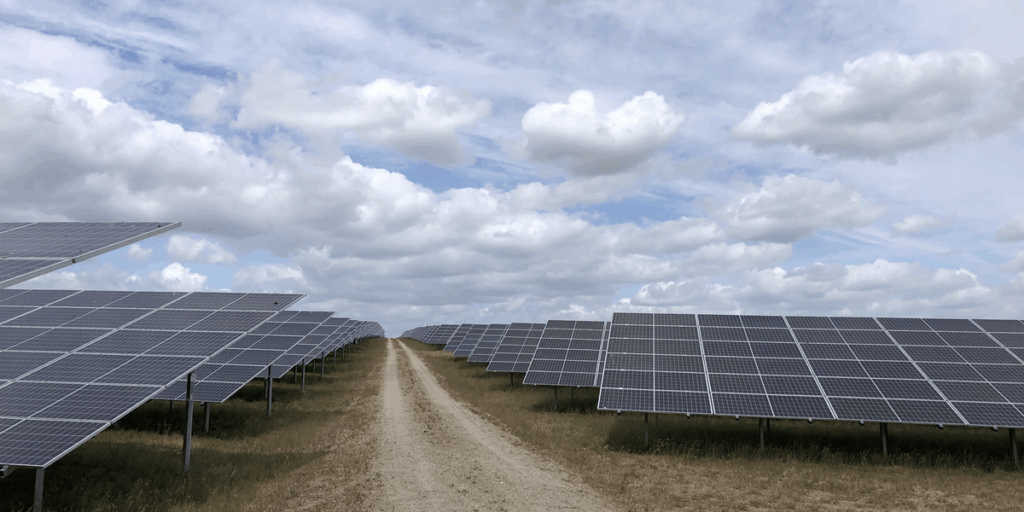Larks and other bird species bloom in the solar parks of Germany, where the breeding success is larger than that of many other habitats. These PV project sites become valuable hiding places and benefit from both animals in the wild and the surrounding environment.
Larks have become rare in the German agricultural landscape. But at the moment I can hear several. There, a different one, only 30 meters away. From the ankle -high grass, the vertical rises into the sky and starts to vibrate loudly after just a few meters. The nest is probably hidden somewhere underneath on the ground, well camouflaged against casual discovery.
Biologist Matthias Stefer said that the high density of larks’ breeding in one of the largest solar parks in Brandenburg, north of Berlin, is amazing. In his breeding area he had 178 places in the solar park and the surrounding areas. On average there are 21 to 47 breeding pairs per 10 hectare. This is the highest lark density he has ever encountered. The reference area on a nearby field has only 33 spots, equal to 7.6 lark pairs per 10 hectare. Whether they can successfully breed there when the farmer sprays, fertilized and harvest all summer in the summer.
The high numbers in the PV systems mounted on the ground are also surprising because larks avoid vertical structures. The birds prefer open, wide landscapes away from forests and forest edges. However, they do not seem to disturb the long photovoltaic rows with six modules stacked on top of each other. Instead, they benefit from the benefits of the location.
People rarely visit the fenced facility. The vegetation is kept briefly by sheep, currently in the sun with their lambs between the rows of modules. The droppings of the sheep and a changing selection of flowering herbs offer the birds a varied insect buffet.
Natural diversity
It is not only larks who appreciate this. Right at the entrance of the solar park, a small bird, a wheatear, threatened with extinction in Germany, on the edge of a module. During his monitoring two years ago, Stefer discovered only one breeding couple. This year he doesn’t have to look far.
Birds learn too. Initially only nesting on the edge or in surrounding compensation areas, they migrate more and more between the rows. White wagtails, corn bundles, whitethroats, red back slumber and yellow waggots breed under sun roofs. Moreover, there are bird species that are alone for feeding or migratory birds, such as the red kiteirkeling in the air in search of mice and other small animals. Stefer has observed a total of 17 different species.
The latest study by Bundesverbands Neue Energiewirtschaft (BNE) also shows that solar parks offer habitats for endangered animals, and better than the surrounding agricultural country. However, this realization is gradually gaining acceptance, just as development in a bird paradise takes time.
When I first saw what was the largest solar park in Germany in the spring of 2021, shortly after it had entered into force, it looked no more lively than the grass of a football field. Cut the grass evenly with the ground. The PV system mounted on the ground, with its closed driving distance, does not meet the recommendations for biodiverse solar parks. Sheep keep the vegetation in the system short and ensure a diverse flora because of their work.
However, with the right, modest care, the park will get a diverse appearance over time.
“With the general concept, adapted to the local ecosystem, including suitable technical and landscape planning and the maintenance of the area, the solar park will acquire a structural diversity that is rare in today’s landscape and immediately correlates with biodiversity,” said Timur Hauck, business expert for nature and species retention at German energy group ENBW.
After the former agricultural country has been converted, fertilizers and pesticides gradually wash from the ground. Depending on the location and management approach, this process can be helped by actively thinner, such as reducing soil feed substances by sheep grazing or mechanical maintenance, such as the removal of virgin grass.
“In the case of orphanage [solar park]Grazing sheep has proved to be very successful because it has transformed the solar park into a paradise for Skylarks, “said Hauck.
The area now shows much greater diversity. In this dry spring, grass only becomes green in the shade under the solar panels, in addition to stinging nettles that nibble sheep on undisturbed. In the sunny areas for the rows, drought-resistant, low red-brown grasses grow under crispy lichen. Frequent sheep paths create sandy paths and form a mosaic of biotopes that stimulate biodiversity, including wild animals.
This content is protected by copyright and may not be reused. If you want to work with us and reuse part of our content, please contact: editors@pv-magazine.com.

